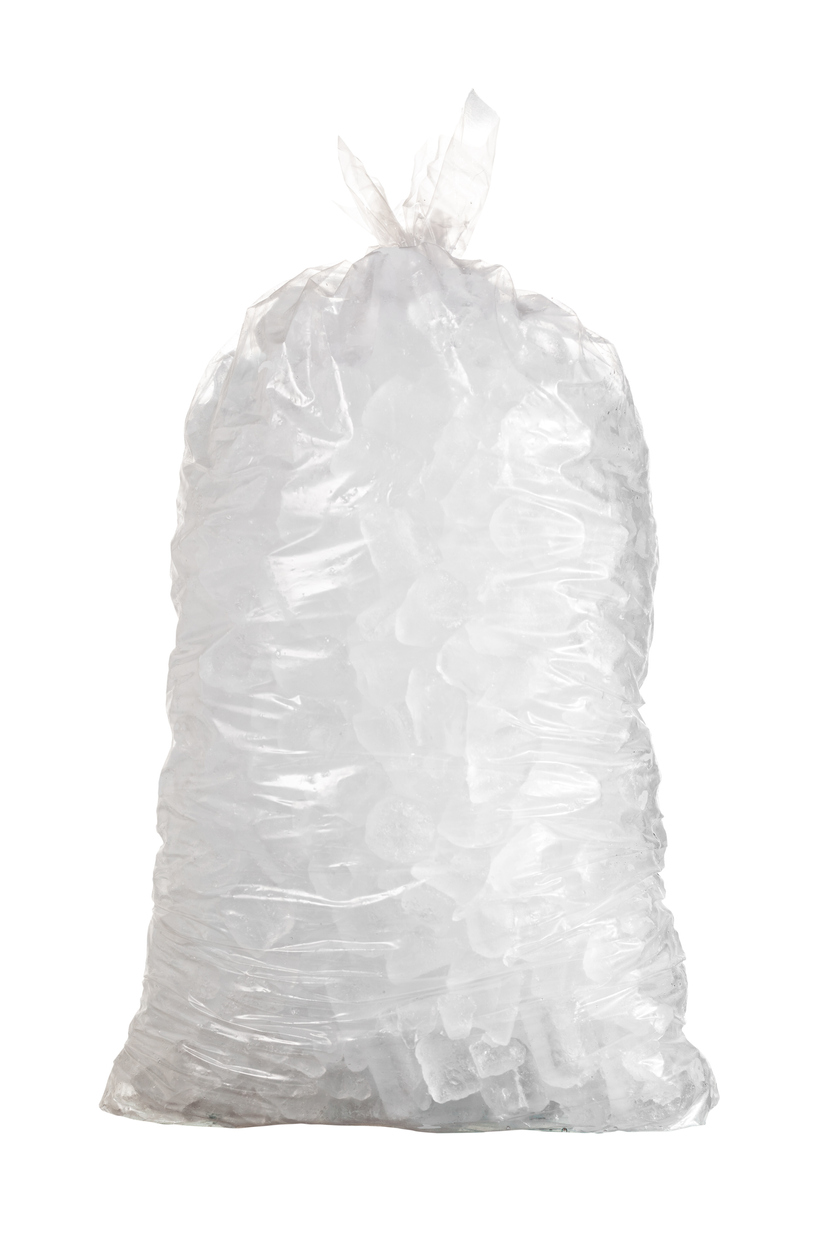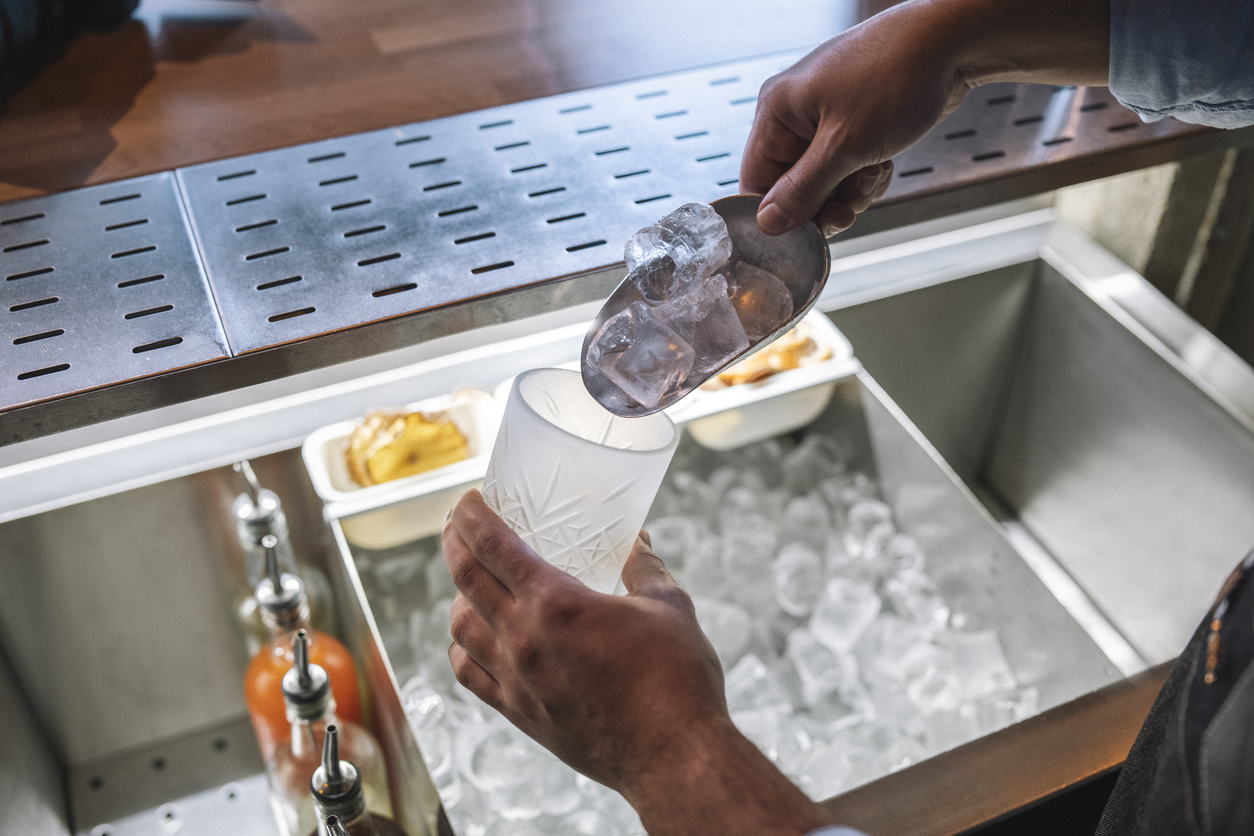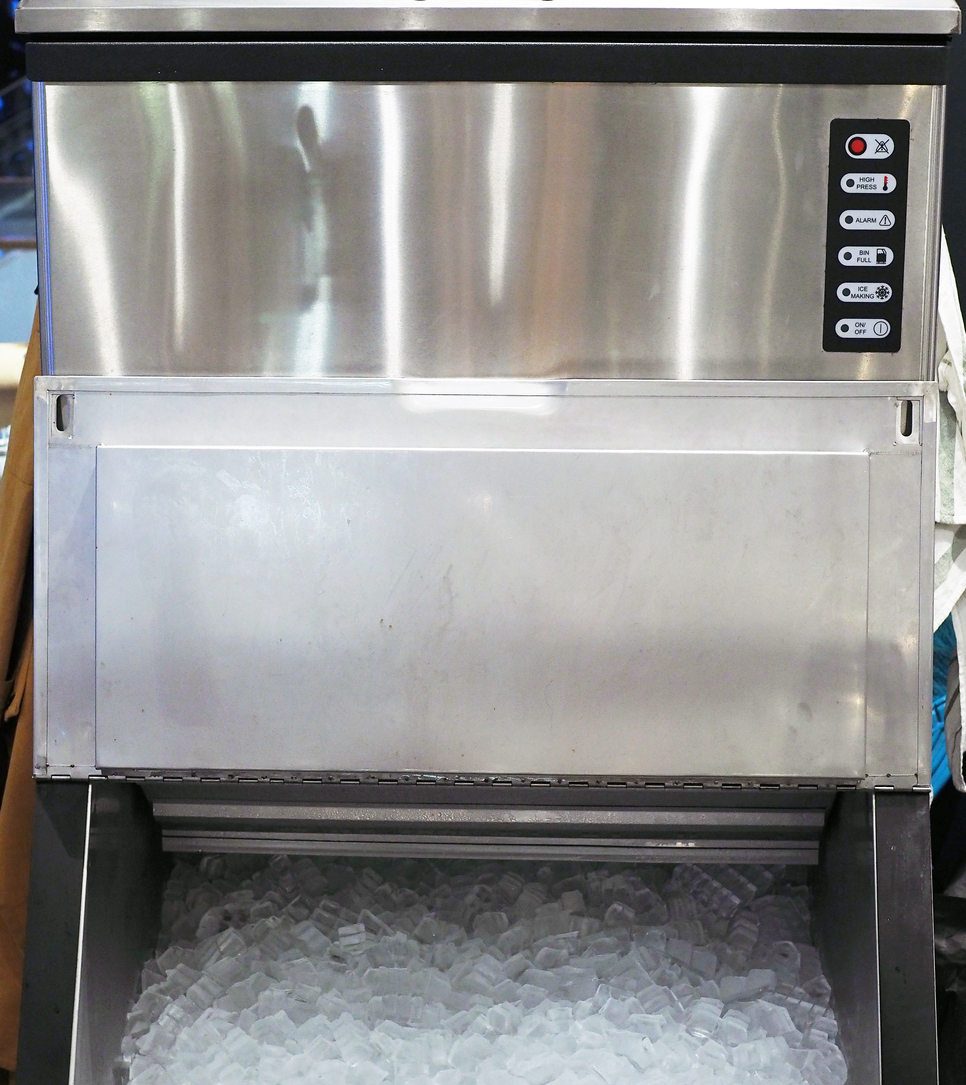Ice
Ice used for human consumption has the potential to cause food poisoning if it is not manufactured and handled properly.
Everyone serving, handling or manufacturing ice that will be consumed or will come into contact with food, has a responsibility to ensure that the ice is safe, fit for consumption and free of harmful bacteria.
Ice, including ice used in drinks, should only be made from drinking quality water.
Packaged ice
 Packaged ice should be:
Packaged ice should be:
- manufactured in a commercial ice factory, not made and packed in unhygienic conditions e.g. ‘out the back’ of a local service station
- labelled with the manufacturer’s lot identification (batch code), so it can be identified in case of a food recall
- made using quality drinking water.
Unpackaged ice
Unpackaged ice should be:
- hygienically stored, handled and displayed
- dispensed using clean utensils, or handled using gloves or clean hands
- if using an ice machine - be clean and located inside the food premises.
Personal hygiene
- do not handle ice if you are ill, particularly if you have symptoms of a cold or flu, vomiting, diarrhoea, or a skin infection on the hands.
- thoroughly wash hands with soap and warm running water and dry hands with disposable paper towels before handling ice
- if handling ice, avoid handling other materials that may transmit bacteria (cross contamination) to the ice (e.g. used cleaning cloths, tea towels, refuse containers etc.)
- keep your clothing, hands, fingernails and body clean at all times and if required, wear protective clothing (gloves, caps, aprons)
- do not smoke before or whilst handling ice.
Handling ice
- do not handle ice with glass cups, the glass may chip and contaminate the ice
- use clean ice scoops, ice buckets, clean hands or disposable gloves
- do not break up or loosen bags of ice on the floor or other unclean surfaces, as the ice may become contaminated
- ensure only a minimum number of staff and customers handle ice
- hold the ice scoop by the handle, do not touch parts of the scoop that come into contact with ice
- do not return unused ice to the ice machine or package.

Serving containers
- rinse the serving container with boiling water or sanitiser before and after storing ice
- serving containers should be fitted with a lid to prevent contamination
- serving containers should only be used for the purpose of storing ice
- ice buckets for transfer of ice should be stored in an area free from dust and debris (e.g. closed cupboard) and used only for ice.
Utensils
- ice scoops should be cleaned and sanitised daily and made of a smooth and easily cleanable material (e.g. stainless steel)
- ice scoops should be stored on a clean tray made of smooth and impervious materials such as stainless steel, plastic or fibreglass when not in use.
Ice machines
Improper ventilation, inadequate air conditioning in the area and dirty components will not only decrease the efficiency of the ice machine but also support the growth of harmful bacteria. The following measures can be taken to prevent these problems:
- Choose an ice machine most suited to your business, preferably one which can also be easily accessed and thoroughly cleaned by staff.
- Plan the location of an ice machine carefully. Place the ice machine in a well ventilated area inside the food premises or in an area which is not exposed to airborne contaminants or accessible to the public.
- Separate other machines (e.g. beverage machine, fridge, dishwasher) from the ice machine to ensure adequate circulation of air and prevent build-up of heat.
- Ensure that the water supplied to the machine is safe. If you are not supplied with reticulated town water, the water may need to be tested to ensure that it is safe.
- Keep the lid or door of the ice machine closed when not adding or removing ice.
- Obtain the operator’s manual for the ice machine and include the ice machine in the cleaning schedule.
- Inspect the ice machine interior regularly for build up of mould and other contaminants and clean and sanitise accordingly.
- At regular intervals, such as monthly or quarterly, disconnect the ice machine, discard all ice and disassemble removable parts of the machine to thoroughly clean the machine and parts.
- Check for the need for repair of any part of the machine from time to time, paying particular attention to filters, leakage problems and broken seals.
- Undertake regular professional maintenance of the ice machine.
Storage of bagged ice
- store bagged ice on shelves, do not store ice on the floor
- store away from possible contaminants such as fish bait, raw meat and vegetables to prevent cross contamination (consider any possible leakage from above).


